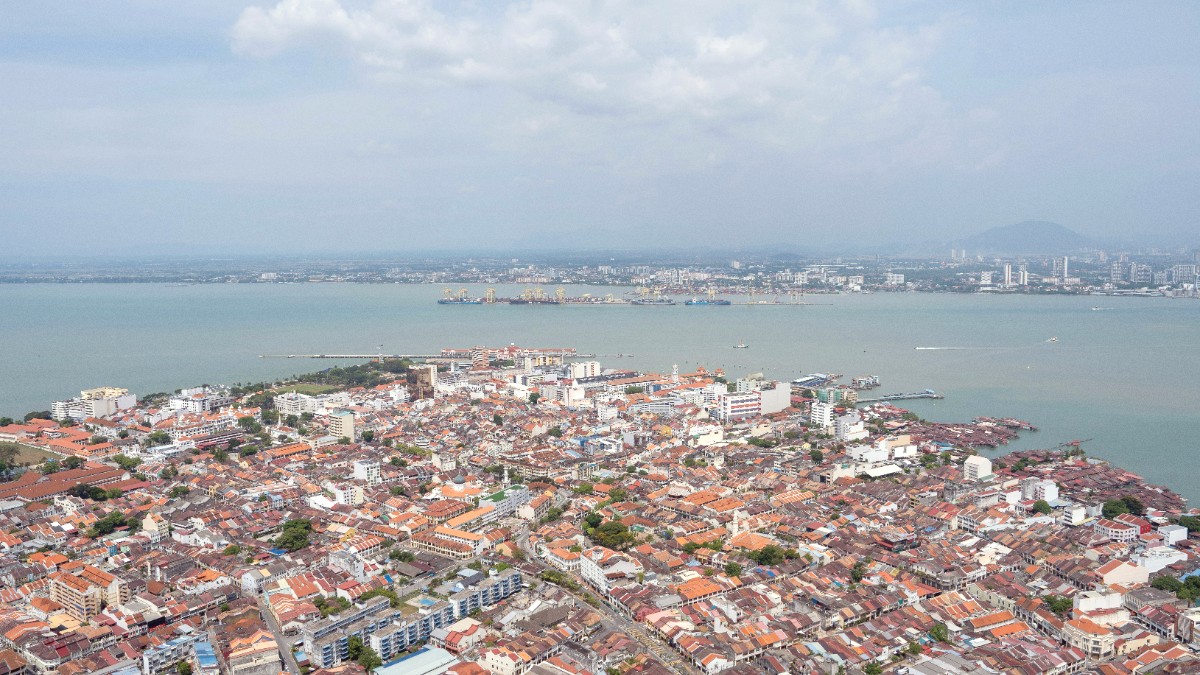
Malaysia
Daily temperatures consistently range from 25°C (77°F) to 33°C (91°F). Temperatures rarely fall below 22°C (72°F) in the evenings. Humidity often stays above 80 percent, making temperatures feel warmer. Rainfall typically comes as short, heavy afternoon or evening downpours, intense but usually passing quickly.
Malaysia is outside the typhoon and hurricane belt. Extreme heatwaves seldom occur, but persistent high humidity makes temperatures feel hotter. Staying hydrated and seeking shade remain important. Occasional transboundary haze from forest fires in neighboring countries can impact air quality between June and October.
Local authorities monitor air quality indexes (AQI). Pack face masks if you have respiratory sensitivities and travel during these months.
The weather generally features less frequent heavy rain, especially from December to February. These periods often bring drier, sunnier days, suitable for outdoor exploration. Expect higher prices for accommodation and flights. Popular attractions have larger crowds.
Fewer crowds are typical, and potentially lower prices for flights and hotels compared to the peak season. The weather remains pleasant, though with a higher chance of afternoon showers. This period balances agreeable weather with fewer tourists, making for a more relaxed experience. Temperatures can feel specifically hot and humid. Occasional haze might occur during drier spells, especially from September to October, due to regional burning. Check local air quality indexes (AQI) if traveling during these months.
Period for the west coast, less pronounced for these cities.
Significant accommodation and travel discounts often present themselves.
More authentic local experiences and easier access to popular spots.
Higher chance of rain; showers, though brief, happen more frequently.
Some smaller businesses might have reduced hours; major attractions and food stalls largely remain open.
Certain activities benefit from specific times of day or year. Plan street art and walking tours for early mornings or late afternoons to avoid peak heat and humidity; light for photography is also better. The drier months, December to February, suit beach activities in Penang for clearer skies and calmer seas. Food exploration thrives year-round, as most hawker centers operate under cover, offering shelter. Cultural festivals align with lunar calendars (Chinese New Year, Deepavali, Hari Raya Aidilfitri); check local calendars for exact dates. Accommodation and transport prices surge during festival times.
November-March. Mainly impacts the east coast; its effect on Melaka and George Town (west coast) is minimal.
May-September. Brings more rain to the west coast, typically as heavy, short-lived showers, not continuous downpours. Outdoor plans are seldom ruined for an entire day.
Malaysia's location outside the typhoon and hurricane belt means these events are not a concern.
Malaysia presents good value for travelers compared to many Western countries. The local currency is the Malaysian Ringgit (MYR), often denoted as RM. Exchange rates fluctuate; as of late 2023/early 2024, approximately 1 USD equates to 4.70 MYR.
ATMs are widely available in both Melaka and George Town, found at banks, shopping malls, and convenience stores. They offer competitive exchange rates. Money changers in tourist areas and shopping malls also provide good rates. Compare rates before exchanging large sums. Credit and debit cards gain wide acceptance in hotels, major restaurants, and shops. Cash is important for street food, smaller vendors, local transport like buses, and trishaw rides. A mix of payment options works well.
RM 100-180 (approx. $21-$38 USD) daily for hostel dorms, street food, and public transport.
RM 250-450 (approx. $53-$96 USD) daily for boutique hotels, casual restaurants, some tours, and Grab.
RM 600+ (approx. $128+ USD) daily for 5-star hotels, fine dining, private transfers, and guided tours.
Tipping is not customary in Malaysia, especially in local eateries or for everyday services. You need not calculate an extra percentage. In higher-end restaurants and hotels, a 10 percent service charge and 6 percent sales and service tax (SST) are usually part of the bill, making additional tipping unnecessary. A small tip (RM 5-10 for a hotel porter) is appreciated for exceptional service but remains optional.